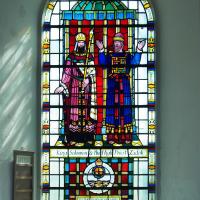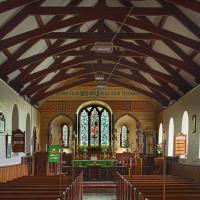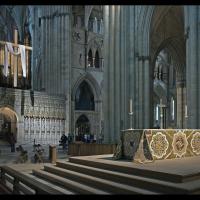With the current circumstances requiring cancellation of this weeks meeting of the IOM Photographic Society, thisis perhaps an opportunity to present some thoughts on shooting architectural interiors, particularly of our churches and cathedrals.
In these stressful times, whether one is religious or not, many of us find it helpful to take time to meditate, to slow down and to contemplate just how lucky we are to live here on the island, largely free of many of the day-to-day concerns of our families and friends living across the water. And where better to find that haven of calm and tranquility than a church or cathedral?
But whether church or cathedral, large or small, simple or complex, they all have an ambience and an atmosphere a mixture of tradition, timelessness, culture and yes, tranquility.
The art of photography is in utilising the available light to maximum advantage, in meeting the authors aspiration for the shot, and in allowing the viewer to share that vision for the image. Architectural shots are usually carefully planned if to achieve the desired results as lighting will often be difficult, with limited light via windows or with different types of light including natural daylight plus electric lights (which usually have a different wavelength to daylight and which results in a colour cast). But the big advantage of photographing a building is that it doesnt move there is time to consider every aspect in taking the image, so be patient and think carefully.
To get the maximum quality in the image will usually require a tripod or something convenient on which to stabilise the camera this will ensure a really sharp image is achieved as the shutter speed may well be lengthy. The technique mentioned in last weeks article of bracketing with a selection of identical shots taken in a range from under-exposed to over-exposed to ensure all variations in lit and shadow areas have been captured may well be required as well. If there is opportunity to do a tidy up, then do so - a well organised arrangement in your composition is essential to the final image. And do you want people in your image or not? Or just be patient until the scene is clear .
Be aware that pointing your camera up or down will result in the problem of converging verticals - of the building appearing to lean over. Using a tilt and shift lens is one way (albeit usually expensive) to keep the verticals vertical, though software such as Photoshop provides tools to do something similar. And be prepared to think of details such as the stained glass windows or statuary as well as the big picture of the naves and associated columns.
Ron Shimmin is a Life Member of the IOMPS and a master of using light in his photography as his image of York Cathedral shows, the image capturing the magnificent setting beautifully. My image of Maughold church is much simpler, but the quiet serenity is also evident, whilst the Farrant window at Jurby Church is an example of the craftsmanship and artistry of stained glass.
Our next meeting is on 10th February when Dorothy Flint from the Western Society will be presenting images of Tuscany. Our meetings are held the St John Ambulance HQ on Glencrutchery Road, starting at 7:00 pm and are open to the public (non-members with a modest entry fee), and all will be given a very warm welcome. Please check our website www.iomps.com for full details of our updated programme.
The Isle of Man Photographic Society is supported by the Arts Council
By Chris Blyth
CAPTIONS:
IMAGE 01: Interior York Cathedral by Ron Shimmin
IMAGE 02: Maughold Church by Chris Blyth
IMAGE 03: Farrant Window Jurby Church by Chris Blyth



